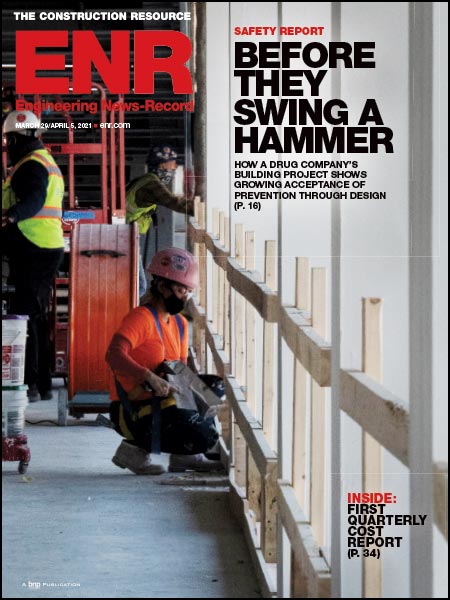The Supreme Court justices heard oral arguments on April 19 in an environmental case that could have broad ramifications on the ability of states and private parties to file public nuisance claims against utilities that emit greenhouse gasses.
At issue in the case, American Electric Power v. Connecticut, is whether states and individuals can sue utilities under federal common law for contributing to global warming, and force them to reduce emissions of CO2. Legal observers say it is one of the most significant environmental cases since the landmark 2007 Mass. v. EPA, which gave the Environmental Protection Agency broad legal authority to regulate greenhouse gases under the Clean Air Act.
Some construction organizations worry that a ruling by the court in favor of the states and conservations groups in the case could set a dangerous precedent in which virtually any group claiming injury from global warming could file a nuisance lawsuit to halt construction projects, says Amy Chai, senior counsel to the National Association of Home Builders, which filed an amicus brief in the case.
The case originates from public nuisance lawsuits filed in 2004 by Connecticut, New York City, several other states and conservation organizations against the five biggest emitters of greenhouse gasses in the United States: AEP, the Tennessee Valley authority, Cinergy, Southern company and Xcel Energy, Inc. The states and conservations groups claimed that their constituents suffered as a result of greenhouse gas emissions from the utilities and asked that the utilities be required to cap emissions of CO2.
The utilities argued that the states lacked legal standing to bring the claims to the court system. A federal court dismissed the state’s case; but the U.S. Court of Appeals for the Second Circuit reversed the lower court’s ruling in 2008.
The court could end up with a split 4-4 decision, as Justice Sonia Sotomayor recused herself from the case. Some legal experts note that only three of the justices from Mass. V. EPA remain on the current court. Although it is difficult to determine how the judges might rule, they asked several questions related to whether it should be the courts or other branches of government that should be establishing the nation’s global warming policies, and whether a federal regulation would displace a determination by a district judge in a hypothetical common law public nuisance case.
Justice Ruth Bader Ginsburg noted that the EPA is already working on a regulation, and that the regulatory process takes a certain amount of time to finalize. Barbara Underwood, solicitor general for New York, who argued for the states and land conservation groups, noted that there are efforts to derail those regulations, and said, “It would be very surprising if this court would conclude that the promise of federal regulation would displace the common law.”
But outside of the courthouse, Peter Keisler, a partner with the Washington, D.C. offices of Sidley Austin, LLP, who argued for the utilities, told reporters, “This isn’t a case about what the policy on natural climate change is going to be; it’s about which branch of government should decide what a global warming policy should be.”
Eric Glitzenstein, a partner with Washington, D.C.-based Meyer Glitzenstein & Crystal, who helped write an amicus brief for several environmental groups, including the Defenders of Wildlife and the National Wildlife Federation, notes, “We’re not trying to swing the door wide open for these claims....Our real focus is trying at least to ensure that we don’t really stymie standing for conservations organizations to bring [forward] not only global climate change-related cases in other contexts, but even other traditional kinds” of cases.”


